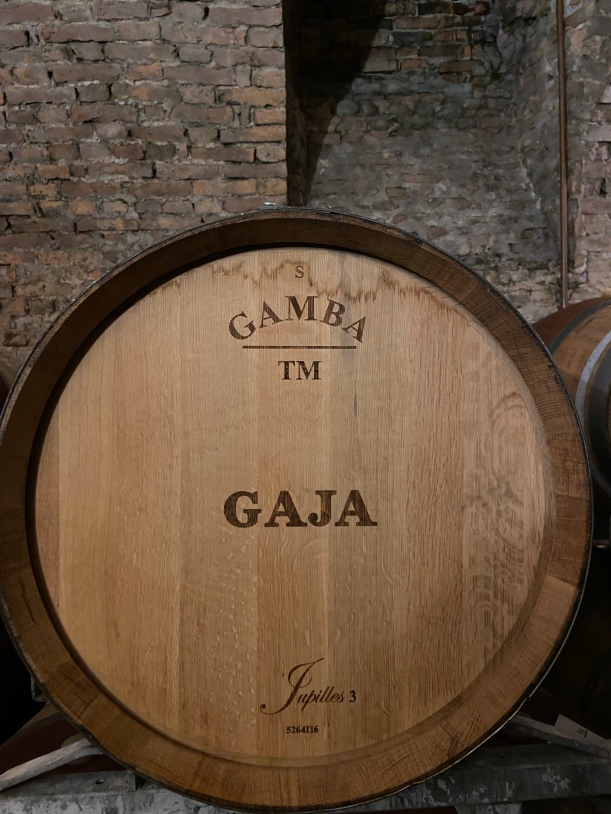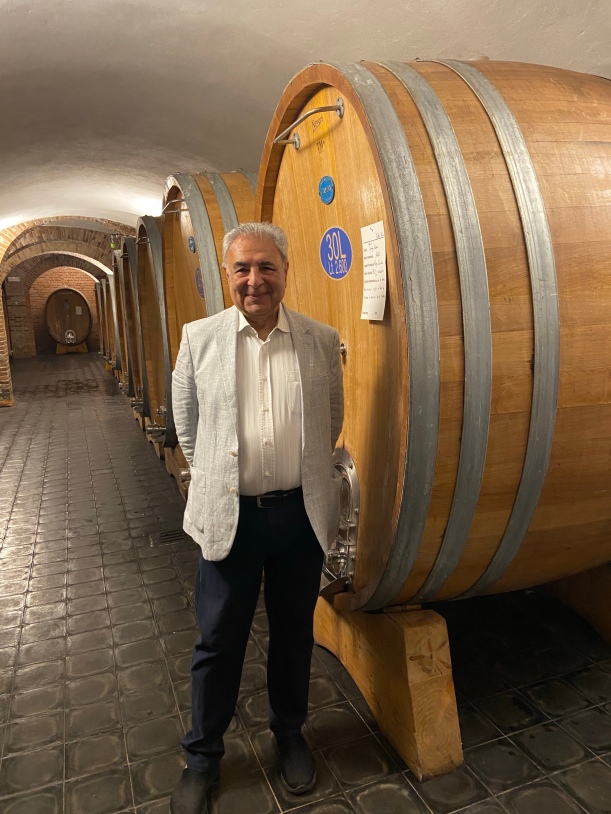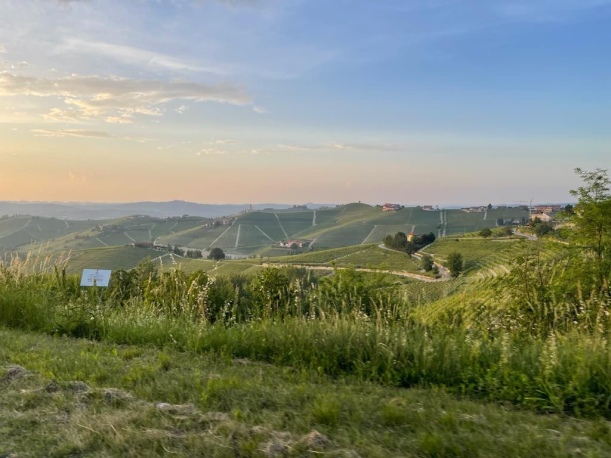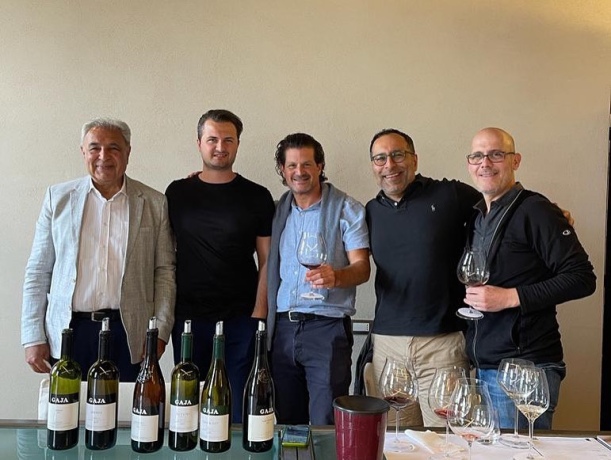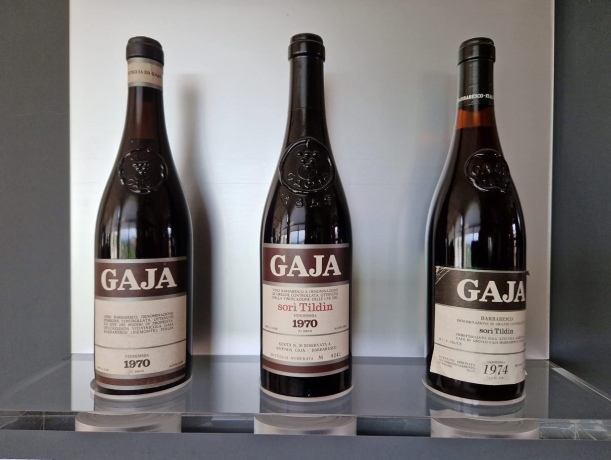The weekends impending champions league final reminded us it was exactly a decade on to the day from our last wine trip to Piemonte.
We spent the May weekend of 2012 in Barolo and were escorted through the region by Roger Barlow of Gerard Seel.
This time to Barbaresco, facilitated by our friend Mehul, a serious Italophile and lover of wines of this region.
The plan was to get a blind tasted overview of the 2019 vintage at Barbaresco a Tavola, then to indulge in the food and wine culture of Piemonte. We had arranged a few select winery visits.
Piemonte is renowned for 3 main red varietals, Nebbiolo of course, Barbera and Dolcetto. Their 3 main white grapes are Arneis. Cortese and Cortese.
We concentrated on Nebbiolo wines. They can be difficult to appreciate young due to their high tannins and acidity and the wines need patience.
However we were in for a few surprises.

The Agenda was Casa Nicoloni for blind tasted 2019 release Friday 27 th May
Saturday 28th May Produttori del Barbaresco followed by Ada Nada
Sunday 29th Marchesi Di Gresy
Monday May 30th Gaja

The Produttori del Barbaresco was founded in 1958. They now have 51 members and more than 100 hectares of Nebbiolo vineyards in Barbaresco. It is conveniently located in the small village of Barbaresco and wines can be tasted by just dropping in. They are well known for producing high quality and more affordable Barbaresco
Lange Nebiolo 2020.
On the nose: Aromatic, herbs, cut strawberry.
In the mouth: Nice balance, dusty tannin, fruit structure, medium in length. Approachable already. 14 euro very nicely made
Barbaresco 2018
On the nose a little volatile, rose, macerated strawberry, pot pourri
In the mouth: good balance, full body, sweet juicy fruit, little hot on end.
Barbaresco 2017.
Herbaceous nose, cinnamon, red tart fruit, cherries.
On the mouth: Rounded fruit, elegant structure, good fruit concentration, slightly puckering youthful tannin, long finish. Very good.
The 2019 although only recently bottled showed as one of the top 6 wines at the Tavola tasting. Confirming the consistent quality of the wines here.

The winery produces 50,000 bottles per annum and is 100% organic, The Ada Nada farmhouse is located in Treiso, near Alba. They have a beautiful Agroturismo with a lovely outdoor swimming pool with panoramic views of the rolling hills.
Cento
Golden green colour, made from 100% Nebbiolo. Grapes are green harvested then the wine is made following a method traditional and the aged for 24 months on lees.
On the nose citrus, lime zest, orange peel some cream, in the mouth sherbet, finishing slightly abruptly. Fresh and fun.
Dilva
This is another 100% Nebbiolo method classic but this time with zero dosage. Made with skin contact and fermented in barrique then and aged for 60 months on lees. The wine is not long enough in barrique to impart a woody character but allows micro oxygenation.
This is a more serious fizz. On the nose: toasted brioche, toffee, flint and smoke. In the mouth stewed spiced apple, nutty, long and persistent, slightly drying from a dusting of pleasant tannin which counteracts the citrus finish.
Neta Sauvignon Blanc 2021.
Grown on north facing slopes.
On the nose a touch of grass, green pepper, concentrated confected pear drops.
In the mouth rich ripe candied citrus, well balanced but finishes a touch warm.
Lange nebiollo Serena 2021
Made in Barbaresco but from youngest vineyard where the vines are 18 yrs old the wine is made to be approachable and for earlier drinking.
Nose: red cherries, raspberries, dried cherries, light herb.
On palate: strawberry chew, chewy tannin, a well made great food wine.
Classic Barbera Pierin 2020
made in large oak 2 year
Nose: Dark cherries, a whiff of polish, touch of sawdust then strawberries, ripe fruit, voilets. In the mouth blackberry as well as juicy red fruit, medium acidity, fuller body, medium length. Tasty! another good quaffing wine.
Barbaresco Valeirano 2019.
The vines here are over 50 years old.
Nose: Mint, bay leaf, celery, cut strawberry, herb, then floral notes. A delicate and complex nose.
In the mouth: medium plus body, tart cherry, savoury meat, liquorice, herbs. Elegant long excellent!
Barbaresco Rombone Elisa 2018. This vineyard was planted in 1947.
Nose: more expressive, soft red fruit, baked strawberry fruit tart, spices, touch of polish and scent of pot purri.
In the mouth: Full bodied, savoury, cooked fruit, sweetness then a ton of tannin, fine grained. The finish is dry but with a line of fruit that persists.
Barbaresco Cichin Reserva 2017.
Spends 3 years in large oak botti and 2 years in bottle before release. From the rombone vineyard planted in 1958.
The wine maker naturally concentrates the wine by letting 20% of the juice run off and leaving the rest to macerate and ferment on the skins.
On the nose: Leather, perfume, pot purri, polish, orange peel, incense very complex.
In the mouth: Rich, spice, leather, orange peel, firm present tannin but drinking. Very long excellent!
Tenute Cisa Asinari dei Marchesi di Grésy
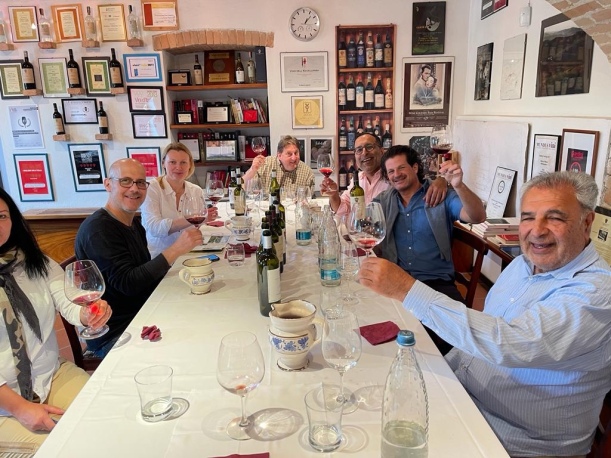






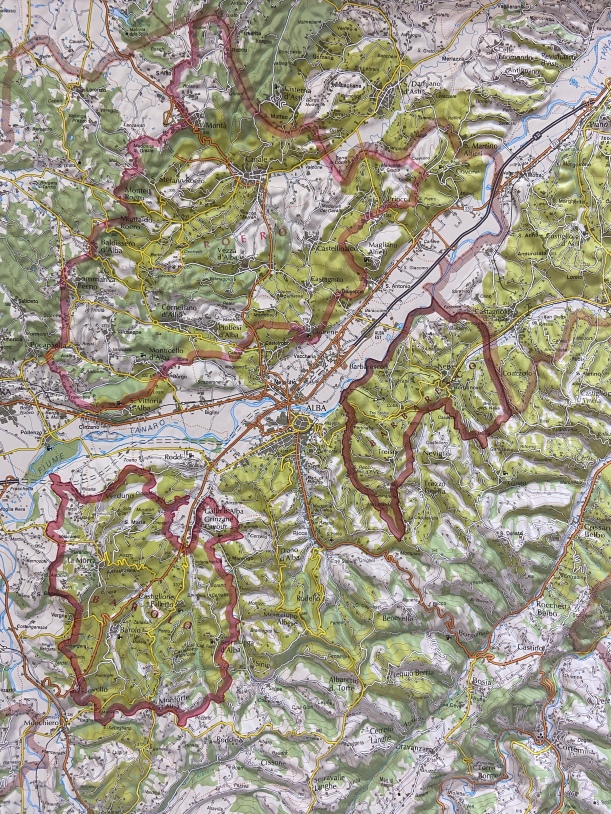


The Cisa Asinari estates of the Marchesi di Grésy include four wineries located in the Langhe and Monferrato region.
2020 Marchesi di Grésy Langhe sauvignon blanc
Flinty smoky slightly sulfurous, reduced,. Bottled 1yr, green gage, nuts, briny,
7-8 mth stainless steel on lees
Greengage, green pepper, tart lemon, mineral dust coating in mouth. Fairly full bodied, good finish
2016 Marchesi di Grésy langhe sauvignon blanc
Darker colour
Lemon curd, sweet top note of peaches, salty, floral
Fuller body, hint of peach, yellow plum? Reminds me of white bordeaux, thought a blend with semillon great finish, excellent acidity
2019 Marchesi di Grésy chardonnay
Pale
Ripe pear, maybe a little peach, great wood influence, vanilla, bit of smoke and toast, stone
Tart apple, peach, great acidity, but drying, very elegant
2015 Marchesi di Grésy Chardonnay
Coal smoke And toast, roasted hazelnuts, white flower,
Caramel, lemon, mineral, really balanced and elegant, acidity, linear
2019 Marchesi di Grésy Dolcetto Monte Aribaldo
Cherry linctus, dark and red, strawberry, stem, slightly burned nose, possible reductive
Savory and tannic, tart cherry, slight bitterness, savoury finish, med acidity
2015 Marchesi di Grésy Montecolombo Barbera
Treated like a barbaresco
Turmeric and cumin nose, dark cherry, vanilla, toffee,
Dark cherry, really drying, super acidity, a little hot, herbaceous, quite tannic in gums
2011 Marchesi di Grésy Virtus Langhe Rosso – Cab Sauv and Barbara 40/60
Green pepper Black currant leaf dark cherry,
Blackcurrant, good acidity and tannin, balanced, mid palate missing
2007 Marchesi di Grésy Virtus Langhe Rosso – Cab Sauv and Barbara 40/60
Much more developed, great mix of the barbera linctus with blackcurrant leaf
Mushroom to start on the nose
Great ripe balanced, fantastic wine,long… love it
2004 Marchesi di GrésyVirtus Langhe Rosso – Cab Sauv and Barbara 40/60
Green pepper Black currant mushroom caramel vanilla
Another great balanced wine, finishes v very cab, very beautiful
2018 Marchesi di Grésy Barbaresco Martinenga
Mixed vintage
Muted nose, slightly floral And herbaceous woody notes, tart cherry
Drying, good intensity and length not showing yet but had very good potential based on finish
2017 Marchesi di Grésy Barbaresco Martinenga Gaiun
Made from specific plots on the outer edge of the Martinenga cru, bordering Asili
Dark cherry strawberry cream pot pourri, roses
Drying, intense dried flower, incense, tart cherry, liquorice, finish forever long, sexy, complete, wine for the long term.
2016 Marchesi di Grésy Barbaresco Martinenga Gaiun
Darker
Sandalwood, Rose, macerated strawberry, white truffle, sapid
More concentration, fruit intensity, liquorice tobacco, finish goes on forever
An epic wine for the long term. Touched something deep inside me, literally brought tears to my eyes
2016 Marchesi di Grésy Camp Gros Martinenga Riserva
12 mths small barrel 18mths large barrel, 3 yrs total 6900 btls made
Dried rose, sandalwood, pot pourris dried cherry orange peel, spice – fascinating nose
Drying, tart, regal tannins, stony, tight. Not showing itself, wait another 5-10yrs for this to emerge.
This iconic winery needs little introduction. We were fortunate to be hosted by the Giovanni, Angelo Gaja’s son.
He gave us a great insight into the wines and the challenges ahead. We looked out of the palatial Gaja headquarters to where the River Tanaro should be. Instead we say a dry cracked river bed with no water in sight. The Tanaro had dried up which is a worrying sign of things to come.
We tried a selection of their wines all made to perfection. Mehul requested a bottle of Sori Tildin (one of my desert Island wines) A vintage 2001 was duly decanted. A fitting finale to a memorable weekend in Barbaresco!

